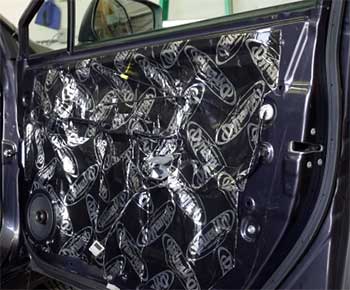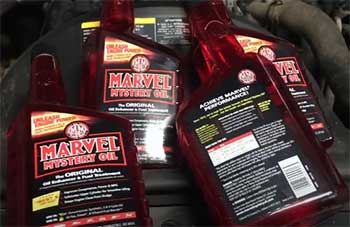When it comes to car audio, achieving crystal-clear sound quality is more than just upgrading speakers or adding an amplifier. In many cases, reducing unwanted noise is the first and most crucial step.
Sound deadening materials like Damplifier Pro and Dynamat come to the rescue.
These products significantly dampen vibrations and unwanted noise, giving you a sublime auditory experience. Today, we’ll delve into these two popular solutions, comparing their strengths and weaknesses to help you make an informed decision.
A Brief Comparison Table
| Features | Damplifier Pro | Dynamat |
| Material Composition | Thicker foil constraint | Thicker butyl layer |
| Heat Resistance | Up to 450°F | Up to 240°F |
| Weight | Lighter | Heavier |
| Installation | Slightly rigid, but high adhesive quality | Flexible, but very sticky |
| Price | Generally more expensive | Slightly more affordable |
Damplifier Pro: Pros and Cons

Manufactured by Second Skin, Damplifier Pro is a sound deadening material known for its high-quality performance. It stands out for its butyl-based composition, which provides impressive noise damping at a lower weight compared to its counterparts.
Pros:
- Effective Sound Damping: Its foil constriction and dense butyl layer efficiently absorb vibrations, ensuring excellent noise reduction.
- Heat Resistant: Damplifier Pro is resistant to heat, making it suitable for use in hot environments or vehicles that tend to overheat.
- Easy Installation: It comes with a self-adhesive layer, making installation straightforward even for novices.
Cons:
- Cost: The major downside of Damplifier Pro is its price. It’s more expensive than most sound deadeners, making it less appealing for those on a tight budget.
- Flexibility: While not a deal-breaker, Damplifier Pro is slightly less flexible compared to other options, making installation in tight corners or curved surfaces a bit challenging.
Dynamat: Pros and Cons
Dynamat is a well-established name in the sound deadening industry. This aluminum-coated, butyl-based material has been around for years, offering reliable noise reduction for all types of vehicles.
Pros:
- Outstanding Noise Reduction: Dynamat is renowned for its sound deadening capability. Its butyl-based composition, coupled with aluminum coating, effectively absorbs vibrations and sound waves.
- Durability: Dynamat is known for its long-lasting performance. It is resistant to heat, water, and other elements, ensuring it doesn’t degrade over time.
- Versatility: Thanks to its flexible nature, Dynamat is easy to cut and mold, making it suitable for complex installations.
Cons:
- Pricey: Like Damplifier Pro, Dynamat also comes with a high price tag. It’s a premium product, and its cost reflects that.
- Installation: Despite its flexibility, Dynamat installation can be slightly tricky because it’s sticky. Therefore, it requires careful handling to prevent it from sticking to unwanted areas.
Also Read: Differences Between MAT66 And Kilmat Sound Deadening.
Key Differences between Damplifier Pro and Dynamat
Though Damplifier Pro and Dynamat both serve as efficient sound deadeners, they have notable differences that set them apart. Let’s dissect these disparities to help you make a more informed choice.
- Material Composition

Both Damplifier Pro and Dynamat share a similar basic composition – a blend of butyl and foil.
However, the differentiating factor lies in their respective thickness and density.
Damplifier Pro boasts a thicker foil constraint layer that’s approximately 2 mils.
This superior thickness makes Damplifier Pro an effective choice for reducing both structural noise and airborne sound waves.
On the other hand, Dynamat has a slightly thinner aluminum layer, although it still provides good noise reduction. It also has a relatively thicker butyl layer, which gives it flexibility, making it easier to install.
- Heat Resistance
Heat resistance plays a pivotal role in the durability and performance of sound deadeners, particularly in hot environments.
Damplifier Pro shines in this aspect due to its high heat resistance. Its manufacturer, Second Skin, claims that it can withstand temperatures up to 450 degrees Fahrenheit, making it less likely to sag or melt in hot conditions.
Dynamat, while also resistant to heat, can withstand up to 240 degrees Fahrenheit according to the manufacturer. While it’s still considerable, it may not match Damplifier Pro in extremely hot conditions.
- Weight
The weight of the sound deadening material is a factor that users often overlook. However, it is crucial because it can affect your vehicle’s fuel efficiency.
Damplifier Pro is generally lighter compared to Dynamat. Thanks to its unique composition, it provides excellent sound damping while keeping the weight low. This feature might make it a better option for those concerned about weight.
Dynamat, although slightly heavier, still offers great sound damping. Its extra weight might not significantly impact your fuel efficiency, but it’s a factor worth considering.
- Installation
When it comes to installation, both products take a slightly different approach.
Damplifier Pro is a bit more rigid, which can make installation in tight or curved spaces a bit tricky. However, its high adhesive quality ensures a firm grip once installed.
Dynamat is more flexible, making it easier to mold around complex shapes. However, its sticky nature can make it a bit challenging to handle during installation. Watch the installation video.
- Price
Both Damplifier Pro and Dynamat are premium sound deadeners, and their price tags reflect that. Damplifier Pro is generally more expensive per square foot, but some users argue that its additional benefits justify the higher price.
Dynamat, while still a premium product, tends to be slightly more affordable. This makes it a more attractive choice for those on a tighter budget.
Also Read: Differences Between SoundShield And Dynamat Sound Deadeners.
Frequently Asked Questions (FAQ)
When it comes to Damplifier Pro (a product of Second Skin) and Dynamat, the choice often boils down to specific needs and budget constraints. Both offer effective sound deadening, but Damplifier Pro’s heat resistance might give it an edge for those in hot climates.
Dynamat is highly effective at reducing vibrations and unwanted noise in vehicles. It’s known for its superior noise reduction, durability, and versatility, making it a top choice for sound deadening.
While not necessary, Dynamat can significantly enhance your car audio experience. By reducing unwanted noise and vibrations, it lets you enjoy music, podcasts, or conversations without disruptions. If you prioritize sound quality in your vehicle, Dynamat is a worthy investment.
The primary purpose of Dynamat is to dampen vibrations and reduce unwanted noise in vehicles. It’s commonly used in car doors, trunks, and hoods, effectively absorbing vibrations caused by the engine, road noise, or wind. This results in a quieter and more enjoyable driving experience.
Final Thoughts
In conclusion, both Damplifier Pro and Dynamat are high-quality sound deadeners that can significantly improve your car audio experience. Your final choice will depend on your specific needs, budget, and personal preferences.
No matter which one you choose, you’re sure to enjoy a smoother and more serene ride.

